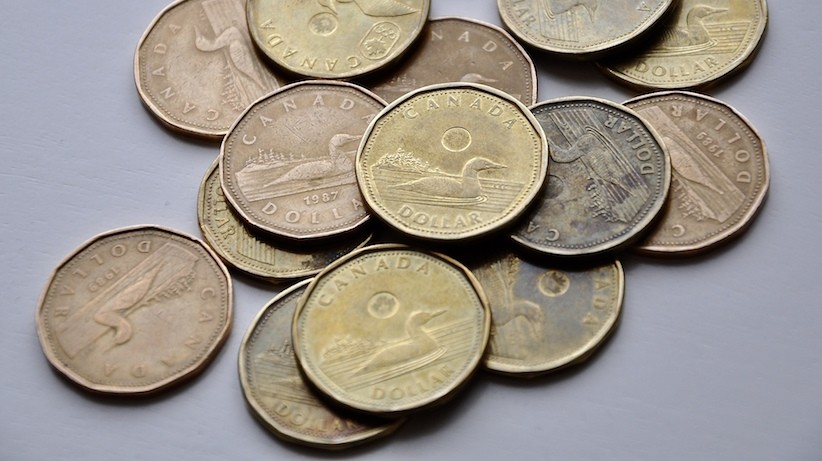This post will show how to create a sustainable Canadian dividend portfolio that’s reliable for any long term Canadian stock market investor. The Canadian dividend portfolio shown below is inspired by the Canadian investor Stephen Jarislowsky.
Stephen Jarislowsky was a large cap Canadian based stock market investor who shared a similar investment philosophy as Warren Buffet. Jarislowsky recommends a buy and hold strategy focused on blue chip dividend paying stocks that investors can hold for life. Jarislowsky rarely makes trades, in fact, one friend of mine who had an separately managed account with Jarislowsky Fraser usually saw about 1 trade per year as dividends were periodically re-invested. If you’d like to read about Jarislowsky’s investment strategy, check out his book The Investment Zoo.
Although a blue chip buy and hold dividend investing strategy has been successful over the long run, Jarislowsky personally is out of step with the sustainability values of today’s investors. Many investors now take a “sustainable” approach to investing by considering social and environmental factors to investment selection. This sustainable investing approach is not something central to investors like Jarislowsky, even though he was an advocate for shareholder rights, he did not use social & environmental factors when deciding what to invest in. Jarislowsky’s approach to sustainable investing focused more heavily on corporate governance compared to environmental and social sustainability. The portfolio I construct in this post will reflect more modern approaches to sustainability by employing a negative screen for companies that don’t support certain sustainability values as defined by an investment policy.
Investment Policy
We will construct this portfolio using a formal written Investment Policy which outlines specific requirements we must meet. The Canadian dividend portfolio we’re constructing represents a 10% allocation of this larger portfolio and the benchmark used to evaluate this portfolio will be the iShares S&P/TSX 60 Index Fund (TSX symbol XIU).
The Investment Policy also lists the specific business activities where we will apply a negative screen, and they are:
- pain management medication
- depression medication
- unhealthy food
- oil extraction
- gas extraction
- mining
- coal power
- gas power
- tobacco
- weapons
- oil/gas distribution
- social media
- genetic engineering
The Canadian dividend portfolio we construct must exclude companies that engage in these activities. To align with Jarislowsky’s approach, we will follow these specific criteria listed below. Below I will also include criteria relating to using an investment counselor (portfolio manager), but investors can also build this portfolio themselves using a discount brokerage account.
- each holding must pay a dividend
- each holding must be within the S&P 500, TSX 60 or relevant international benchmarks
- no real estate holding companies (may include real estate services companies)
- no retailers
- use separately managed account (we must see the individual stocks on the account statements, not funds)
- hold individual stocks in a brokerage account with the following institutions (RBC, TD, CIBC, BMO, BNS, MFC, SLF)
- low number of purchases/sales (historically no more than 1 per year)
- must provide monthly soft copy statement with total account value, individual position cost base and market value, exchange rate applied, and transaction history
- a quarterly or annual in person review
Canadian Dividend Portfolio
To begin constructing this portfolio, we start with a list of the S&P/TSX 60 Index, and screen it for all of our criteria listed above. We strip out all companies that do not pay a dividend, do not match our sustainability values, and also remove all retailers, all companies with either duel class share structures or have a group with a controlling stake.
We’re now left with the following companies:
| BCE Inc. |
| Telus Corporation |
| Bank of Montreal |
| Bank of Nova Scotia |
| Canadian Imperial Bank of Commerce |
| Manulife Financial Corporation |
| National Bank of Canada |
| Royal Bank of Canada |
| Sun Life Financial Inc. |
| Thomson Reuters Corporation |
| Toronto-Dominion Bank |
| Canadian National Railway Company |
| Canadian Pacific Railway Limited |
| Waste Connections Inc. |
| Constellation Software Inc. |
| Open Text Corporation |
| Emera Incorporated |
| Fortis Inc. |
We are left with 18 of 60 companies (30% of the index) from relatively diverse industry groups, but the list is concentrated with financial companies which make up 8 of the 18 companies (44%). The dividend yield of the index at the time of writing is 2.67%, whereas the yield on our custom portfolio is 3.25%. So because our portfolio is more concentrated in some of the bank and insurance companies with higher dividends, this causes our custom portfolio to have a higher yield then the index.
I think these 18 companies are diverse enough that they could be used for any long term Canadian dividend investor. The other benefit to this portfolio is it requires very little ongoing research & analysis. When a company leaves the index and a new company joins, this is a time to evaluate and do a screen, but otherwise the dividends can be periodically re-invested.





